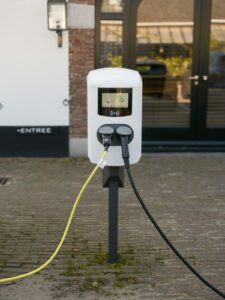
Home / EV Charging News / The Benefits of Workplace Charging Stations: How employers can promote sustainable transportation and attract employees by offering workplace charging stations
As more and more people switch to electric vehicles (EVs), workplace charging stations are becoming an increasingly popular way for employers to promote sustainable transportation and attract employees. In this article, we will discuss the benefits of workplace charging stations and how employers can take advantage of this trend.
Now that we’ve established the benefits of workplace charging stations, let’s explore how employers can implement them.
Of course, implementing workplace charging stations comes with some costs, but there are also incentives available to help offset those costs.
While implementing workplace charging stations comes with some costs, the benefits for employers and their employees make it a worthwhile investment. By assessing demand, determining charging needs, choosing the right equipment, partnering with an experienced provider, and communicating with employees, employers can implement workplace charging stations and take advantage of the benefits of promoting sustainable transportation. Additionally, with the availability of incentives and a positive ROI, workplace charging stations can be a cost-effective solution to attract employees, save money, and improve corporate social responsibility.
$2,890.00 Original price was: $2,890.00.$2,790.00Current price is: $2,790.00.
$3,950.00 Original price was: $3,950.00.$3,450.00Current price is: $3,450.00.
$1,650.00 Original price was: $1,650.00.$1,590.00Current price is: $1,590.00.
$2,290.00 Original price was: $2,290.00.$2,150.00Current price is: $2,150.00.
$1,290.00 Original price was: $1,290.00.$799.00Current price is: $799.00.

Your Power Management Partner for Over 25 Years Future Generations Depend on Our Decisions Today ™
2024 © All rights reserved by CyberSwitching